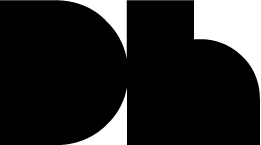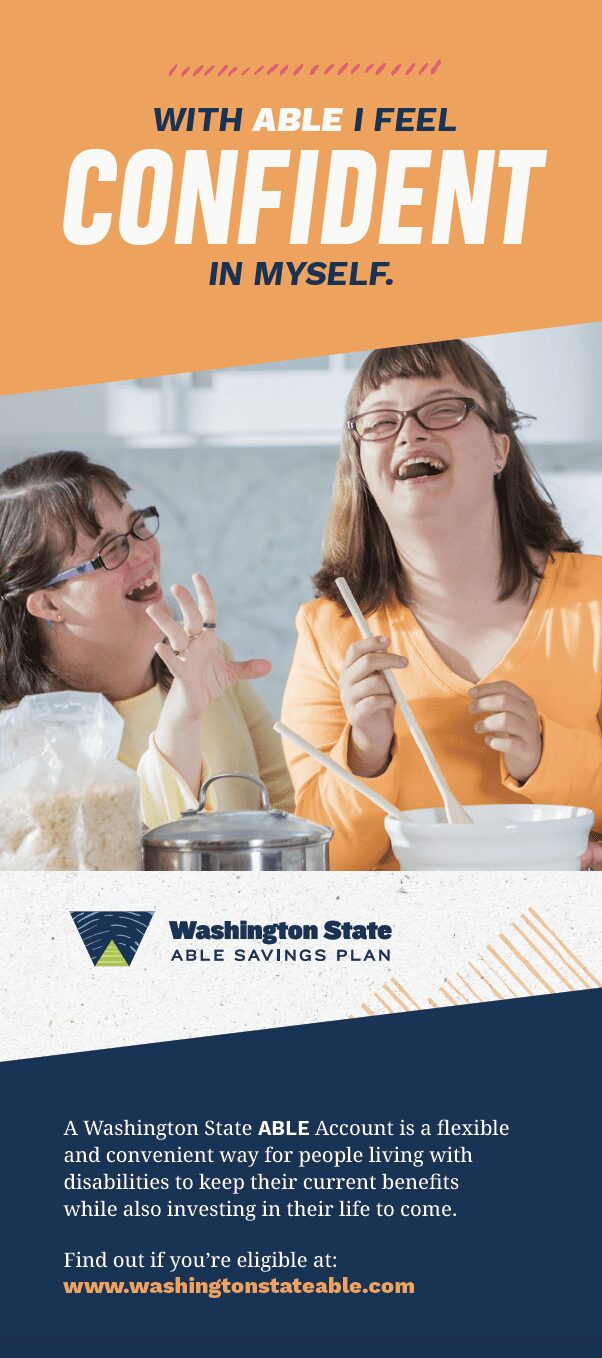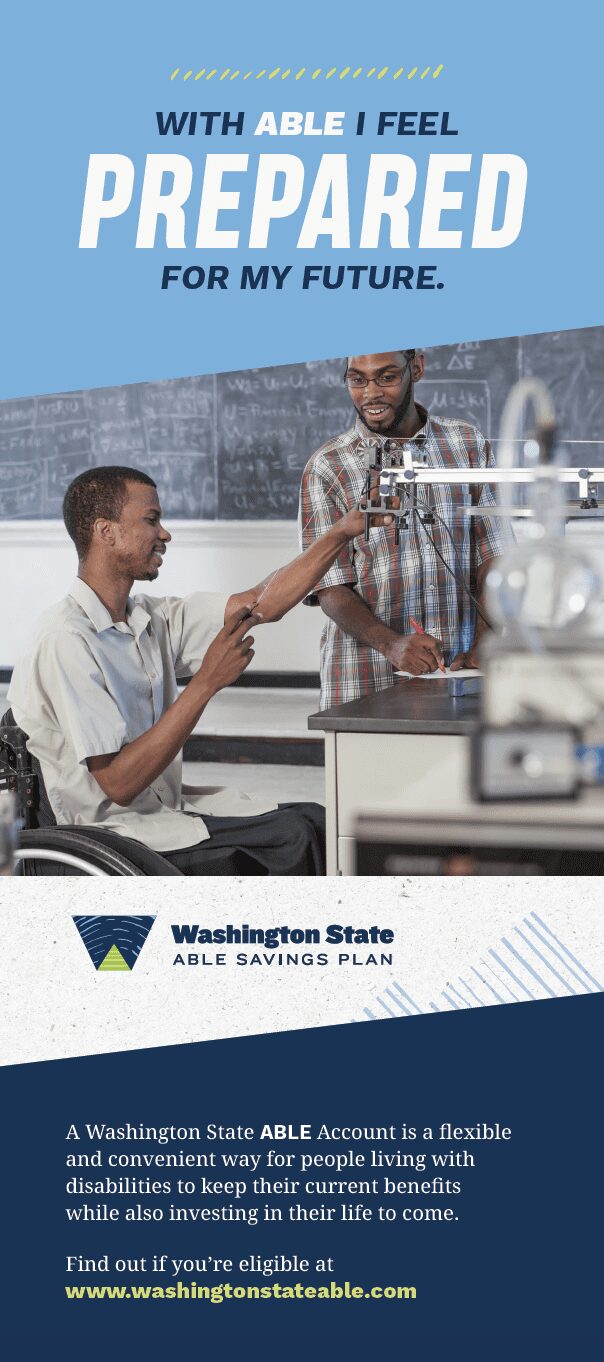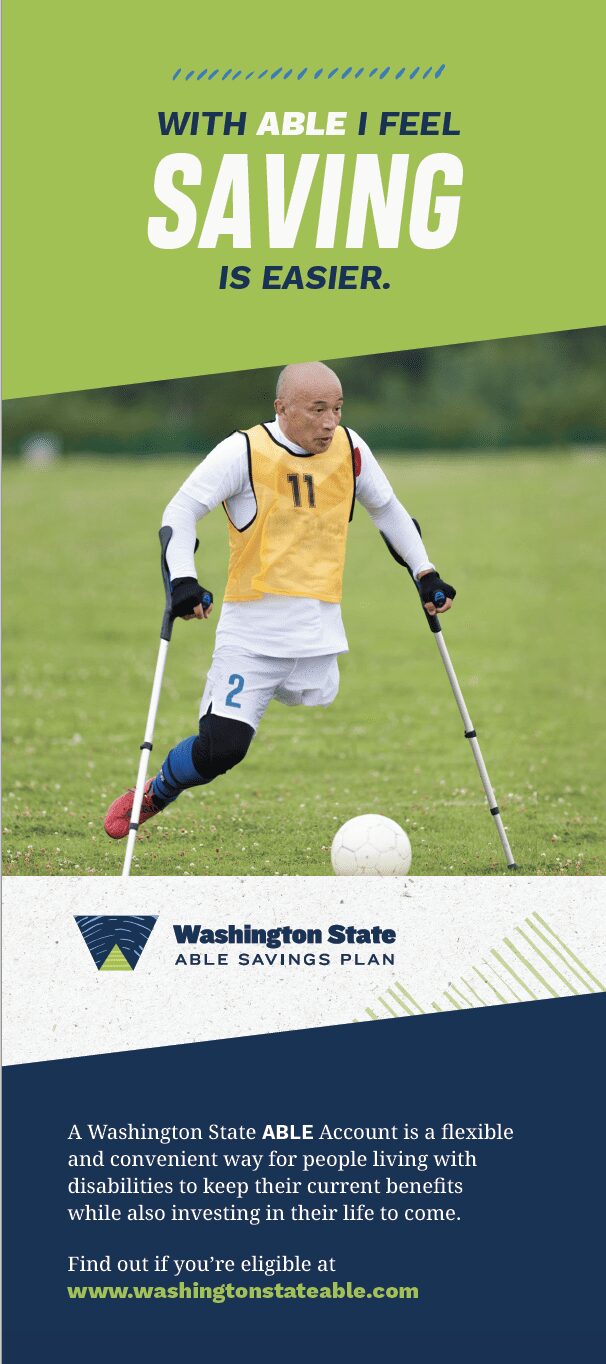Empowering people with disabilities to save money
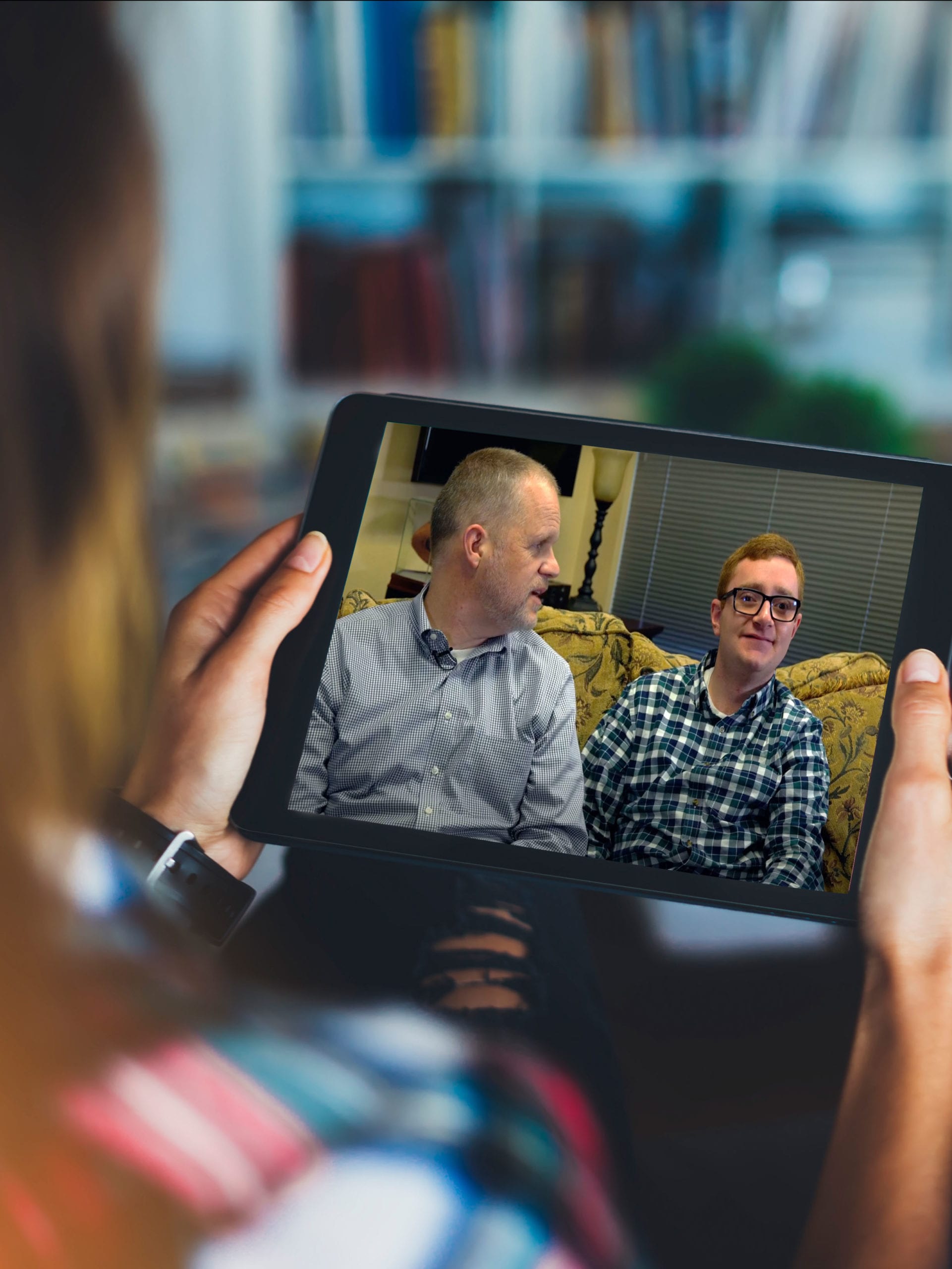
The challenge
In 2014, the U.S. Congress passed the Achieving A Better Life Experience (ABLE) Act, which allowed states to offer tax-free savings accounts for people living with disabilities and their families. With an ABLE Savings Plan, eligible people living with a disability could — for the first time — invest and save money without losing their state and federal disability benefits, such as Social Security and Medicaid.
Since 2014, state-administered ABLE programs have rolled out across the nation. In 2016, the Washington state Legislature authorized its own ABLE program and appointed an ABLE governing board — made up of representatives from the Washington State Department of Commerce, parents of children with disabilities, and leaders within the disability community. In fall 2018, the ABLE governing board selected DH to help promote the ABLE program to the potentially eligible 130,000 to 180,000 children and adults with disabilities in Washington.
Each state can operate its own ABLE program and eligible individuals can enroll in any state’s ABLE Savings Plan, as long as that state’s program accepts non-residents. DH and the ABLE team were in for a unique marketing challenge — to balance marketing an individual state program while promoting enrollment in ABLE accounts nationwide.
Strategy/approach
We developed and executed a multifaceted public education campaign. The campaign aimed to not only build awareness about the existence of ABLE, how it worked and how it enhanced the quality of life for beneficiaries, but also to build trust and confidence in the plan. This audience had been told for years not to save money, or they would risk losing their disability benefits. Plus, there was a certain level of skepticism toward government programs.
In some ways, our audience was specific, but living with a disability means many different things. We needed to reach people across various forms of disability, including physical, developmental and mental disability. We also had to consider messaging to parents and guardians, grandparents, and organizations and agencies that work with the disability community.
We conducted insight interviews and best-practice research early in the process to inform our strategy, messaging and creative.
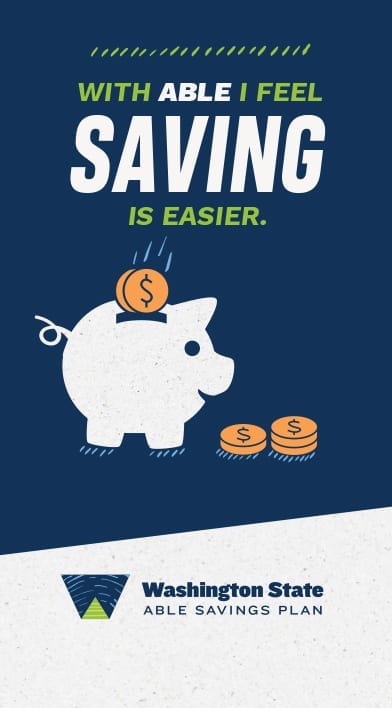

What we did
- Paid media: Digital advertising was the best way to directly reach ABLE’s eligible audience. However, we were faced with constraints that limited our ability to target individuals with disabilities. We overcame this barrier with a statewide paid media plan that combined digital and TV advertising. To support this work, we created digital ads and an animated informational TV commercial.
- Earned media: We lined up real ABLE account holders and professionals who work with this community to share their perspectives on the ABLE Saving Plan and pitched the story to daily news outlets across the state. Media coverage helped raise awareness across a broad audience, build trust in ABLE, and add credibility to the program.
- Partner program: We compiled a comprehensive partner database of organizations that regularly engage with our target audiences. We activated a partner program by providing these organizations and agencies a toolkit of resources they could use to spread the word to key audience, and maintained regular communication with them through an e-Blast series.
- Owned media: We helped ABLE enhance its website and leveraged its social media channels to promote the program. We also created two written testimonial stories and three testimonial videos of real ABLE account holders for use on ABLE’s social media platforms, in digital advertising and in partner toolkits. View the videos here.
We landed on a creative concept we called “I Feel.” Our collateral highlighted photos of people with diverse backgrounds and a wide range of disabilities living full, happy lives. It also centered around key messaging words, such as “Confident,” “Secure” and “Prepared.” We connected with our target audiences by highlighting positive emotions the ABLE Savings Plan can help them feel, and by incorporating key messages such as safety, goal-setting and independence.
New enrollments
Results
The campaign ran from February through June 2019. Over those five months, we saw fantastic results in ABLE’s digital campaign, web traffic, social media engagement, general inquiries — and most importantly — enrollment. Partners used the toolkit we created to increase their communication about ABLE with their key audiences. Based on this early activity, ABLE is on its way to meeting its goal of 1,000 new enrollments each year. Washington state has also emerged as a leader in this campaign, as 71% of all web traffic going to the national ABLE website is coming from Washington.
